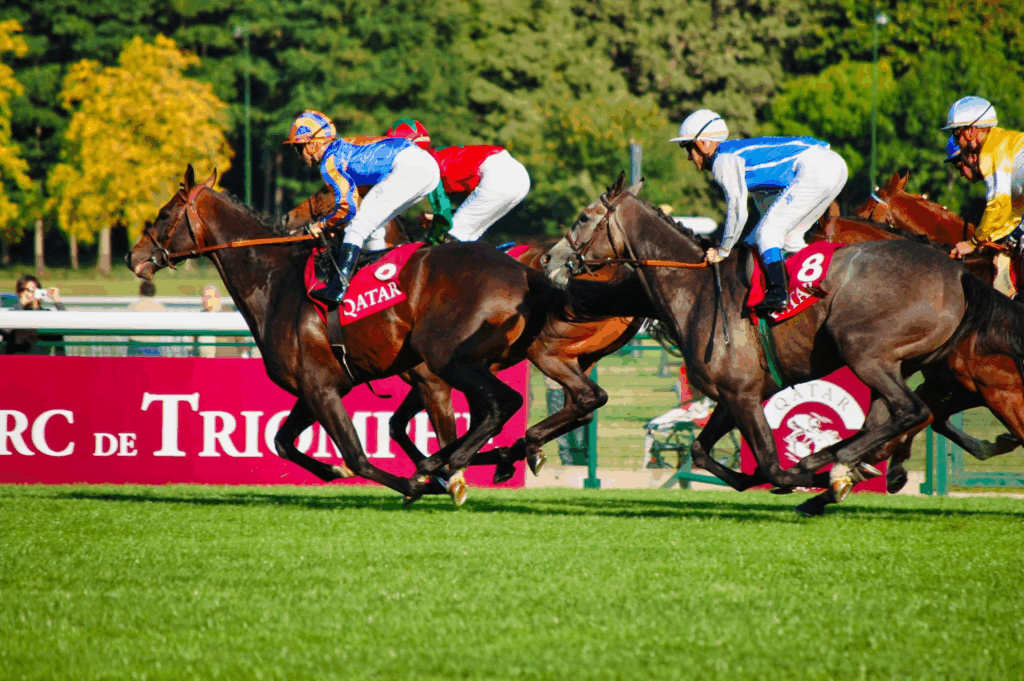
The Preakness Stakes holds a distinct place in global flat racing. Though it forms the middle jewel of the American Triple Crown, its rhythm, identity, and cultural flavor set it apart not only from the Kentucky Derby and Belmont Stakes but also from Britain’s storied Classics like the 2000 Guineas and Epsom Derby. Where European racing prizes patience, stamina, and undulating turf, the Preakness embraces speed, strategy, and the intensity of a tight dirt oval. Understanding what sets the Preakness apart means more than comparing race distances—it’s about recognizing how the race embodies core values of American racing, from aggressive pace scenarios to a different breed of crowd energy and preparation.
A Middle Jewel With Its Own Rhythm
The Preakness Stakes is not the opening act or the grand finale—it’s the middle challenge. Held just two weeks after the Kentucky Derby, its timing creates a demanding schedule for three-year-olds. Unlike the Belmont Stakes, which allows a longer recovery window, the Preakness tests durability and adaptability more than pure stamina. Horses must rebound quickly, travel to Pimlico Race Course in Baltimore, and handle an entirely different pace dynamic.
This tight schedule often weeds out Derby participants who need longer recovery. As a result, the Preakness frequently features a smaller, more tactical field. That creates sharper pace scenarios. Front-runners have a better shot, especially over the 1 3/16-mile distance. It’s a setup that encourages speed and position over late endurance.
Races like the Belmont or the Epsom Derby—both stretching to 1 1/2 miles—reward patience and stamina. The Preakness flips that script with its emphasis on fast early fractions and rail position.
A Test of Momentum, Not Just Merit
The Preakness often turns on which horses can maintain momentum from the Derby. While fresh entrants may arrive with more energy, they typically lack the seasoning that comes from competing at Churchill Downs. In contrast, Derby returnees face the challenge of rebounding quickly, both physically and mentally. The result is a high-pressure contest that reveals which runners can hold their form under strain and adapt to a new, often unpredictable field.
This unique role within the Triple Crown elevates its strategic complexity. It’s not just about which horse is best on paper, but which one can adjust fastest. Trainers must strike a delicate balance between recovery and readiness. No European Classic puts this much pressure on such a tight turnaround. That’s where the Preakness stands alone.
For fans tracking form cycles, pace trends, and jockey shifts, reputable online sportsbooks like FanDuel.com offer real-time updates and market movements. Platforms like these give bettors a way to assess how public confidence shifts leading up to race day, helping them stay informed without relying solely on past performance figures.
Track Surface and Shape Favor a Different Style
Pimlico’s dirt surface plays a central role in shaping the race’s identity. It’s faster than turf and often favors early leaders who can kick clear before deep closers hit full stride. Unlike the turf-heavy landscape of UK Classics, where patient rides and steady acceleration dominate, the Preakness rewards aggression and gate speed.
The track’s tight turns and shorter stretch further amplify this bias. Horses can’t afford to wait too long. Jockeys often push forward earlier than they would in races like the St Leger or the Irish Derby. The configuration demands quick decisions and split-second adjustments. That makes the Preakness less forgiving to hesitation and more favorable to horses that can dictate pace from the front or stalk closely.
What Sets the Preakness Apart
The Preakness Stakes stands apart not just in scheduling or surface, but in spirit. It embodies the fast, tactical, and spectacle-driven nature of American racing, challenging horses and connections to adapt under pressure in ways European Classics do not. From Pimlico’s sharp turns to the festive energy in the stands, every element reinforces a distinct philosophy—one rooted in momentum, aggression, and immediacy. For fans and bettors alike, understanding what sets the Preakness apart is key to appreciating its role in the global racing landscape.